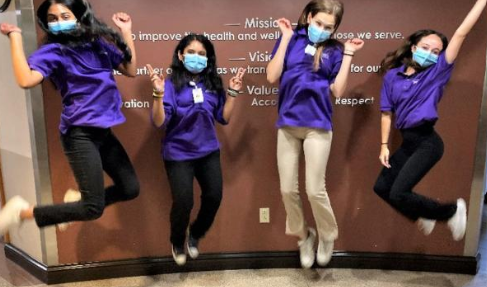
Staff Writer | Volunteer Zone
As temperatures climb and Arizonans prepare for another scorching summer, the risk of heat-related illness also rises.
But when someone collapses or shows sudden confusion, it’s not always easy to know whether it’s heat stroke — or a stroke. Both are serious medical emergencies, but they’re very different conditions that need different kinds of care.
“People often use the term ‘stroke’ to describe heat stroke, and that’s where the confusion starts,” said Marisa Sosinsky, MD, a neurologist with HonorHealth. “They share some symptoms, but what’s going on inside the body is completely different.”
Heat stroke: When your body overheats
Heat stroke happens when your body’s temperature rises rapidly and you’re no longer able to cool yourself down. It’s most common during extremely hot weather, especially during outdoor activities, and it can be life-threatening if not treated quickly.
Symptoms include:
- Body temperature over 104°F
- Hot, dry or damp skin
- Confusion or slurred speech
- Rapid heartbeat
- Nausea or vomiting
- Loss of consciousness
“Heat stroke is a breakdown of your body’s ability to regulate heat. It’s like an internal thermostat gone haywire,” Dr. Sosinsky said. “You can go from feeling okay to collapsing within minutes.”
The elderly, young children, people with chronic health conditions, and those working or exercising outdoors are most at risk. But it can happen to anyone. Staying hydrated, wearing light clothing, and taking breaks in the shade or air conditioning can help prevent it.
If you suspect someone is suffering from heat stroke, call 911 immediately. While you wait for help, move the person to a cooler place, and use cool cloths or ice packs to try and bring down their body temperature.
“Time is critical. The longer your body stays overheated, the more damage it can do — to your brain, kidneys and heart,” Dr. Sosinsky added.
Stroke: A brain emergency
Unlike heat stroke, a stroke is caused by a blockage or rupture in a blood vessel in your brain. It stops oxygen from getting to parts of your brain, and every second counts.
“Stroke is a brain attack,” explained Todd Levine, MD, medical director of HonorHealth Neurology. “Think of it like a heart attack, but in your brain. The sooner we restore blood flow; the more brain function we can preserve.”
The signs of stroke are best remembered with the acronym BE FAST:
- Balance: Sudden loss of balance or coordination
- Eyes: Trouble seeing in one or both eyes
- Face: Drooping on one side of the face
- Arms: Weakness or numbness in one arm
- Speech: Slurred or strange speech
- Time: Time to call 911
Confusion, trouble walking and sudden severe headaches can also be warning signs. Even if the symptoms pass quickly, it could be a transient ischemic attack, or “mini stroke,” which is a warning sign of a future, more serious stroke.
“Knowing the signs and calling 911 immediately can be the difference between a full recovery and lifelong disability,” Dr. Levine said.
A team-based approach to care
At HonorHealth, stroke care isn’t a one-person job — it’s a coordinated team effort that starts the moment a 911 call is placed.
“We have stroke-trained emergency teams, neurologists, radiologists and rehab specialists ready to act quickly,” Dr. Sosinsky explained. “It’s a seamless, team-based approach to make sure patients get the right treatment at the right time.”
HonorHealth has five certified stroke centers around the Valley, which means they meet rigorous national standards for stroke care. Whether it’s administering clot-busting drugs, performing emergency procedures to remove a clot or supporting recovery through rehabilitation, the team works together with one goal: getting you back to your life.
Dr. Levine emphasized how this integrated model empowers both patients and providers. “We’ve built our stroke program around collaboration — across specialties, shifts and systems,” he said. “That’s how we move fast and deliver the best outcomes.”
That same team approach applies to heat-related illnesses, too. Emergency physicians, nurses and specialists collaborate to cool your body, support organ function and treat complications.
“Whether it’s heat stroke or a stroke, our message is the same: Don’t wait. If something feels wrong, get help,” Dr. Sosinsky said.
Encouragement for a safe summer
As summer kicks into gear, the HonorHealth team encourages you to be aware, stay hydrated, and know the signs of both heat stroke and stroke.
“You don’t have to be a doctor to save a life,” Dr. Sosinsky said. “Recognize the symptoms, trust your instincts and call 911.”
Prevention is also key. Plan outdoor activities during cooler hours, wear breathable fabrics, drink plenty of water, and check in on older neighbors or relatives who may not realize they’re overheating.
Dr. Levine added, “In Arizona, summer isn’t just a season — it’s a serious health challenge. But with awareness and action, we can keep our community safe and strong.”
So, whether you’re hiking Camelback Mountain or just walking your dog, keep an eye on yourself and those around you. Because when it comes to your health, recognizing the signs can make all the difference.












